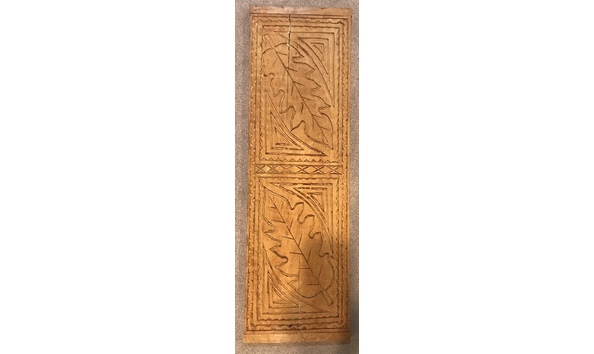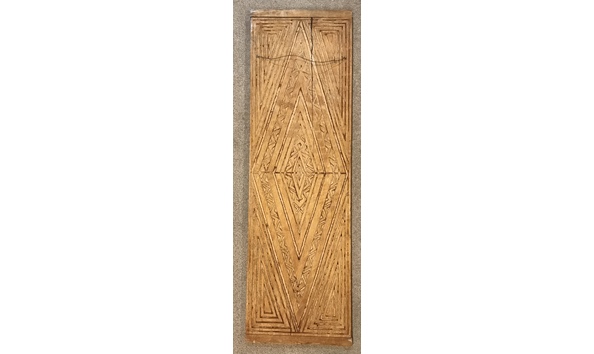Carved Wooden Planks for Decorating Samoan Tapa Cloth
These carved wooden planks are used for decorating Samoan tapa cloths by taking imprints or rubbings from the template onto the siapo. These planks measure approx. 12x37 inches, and are likey from around 1976.
These carved wooden planks are from the estate of Binion Amerson, longtime member of the PSG, one of the original crew of the Pacific Ocean Biological Survey Programme (POBSP), the man who collected the first specimen of Bryan's Shearwater, author of "The Coral Carrier," a history of French Frigate Shoals. These were donated by Jeff Cox, a longtime friend of Bionion's who acquired them after Binion passed away. After the POBSP was completed, Binion worked on a survey of the wildlife of American Samoa. Among Binion's slides were a few, dated 1976, showing tapa cloth making (seen in the photos above), and one of the slides shows a tapa cloth being decorated with the same designs as on these planks.
About tapa cloths:
From the University of Oregon Museum of Natural and Cultural History: "Bark cloth, or tapa, is not a woven material, but made from bark that has been softened through a process of soaking and beating. The inner bark is taken from several types of trees or shrubs, often mulberry and fig, and designs are applied with paints and vegetable dyes of light brown, red, and black. Bark cloth is manufactured for everyday needs such as room dividers, clothing, and floor mats, as well as ceremonial uses in weddings and funerals."
Donated by :
Company Name : Jeff Cox








 What is CharityAuctionsToday?
What is CharityAuctionsToday?